Go the extra mile
Towards a cooler planet
The ripple effect: Understanding the global impact of Amazon deforestation
1 February 2023
Did you know the Amazon Rainforest, covering over 5.5 million square kilometres, is disappearing at an alarming rate? In just three decades, an area comparable to the size of West Virginia has been cleared in Rondônia. This essential ecosystem is experiencing a significant environmental crisis.
The effects of deforestation are profound, transforming our natural surroundings and endangering our future. We are at a critical juncture where understanding and addressing this issue swiftly is imperative.
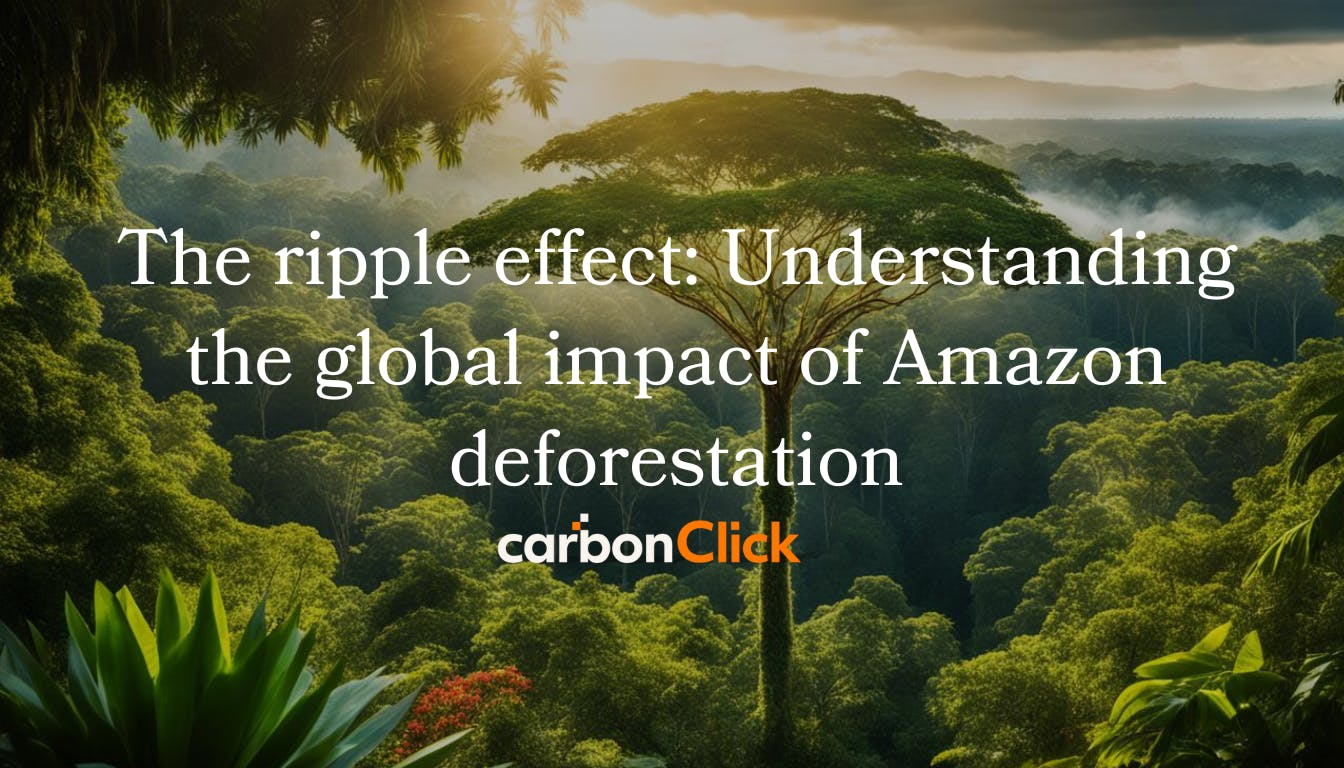
The ripple effect: Understanding the global impact of Amazon deforestation
This issue extends far beyond localised damage. It has wide-reaching implications for global climate patterns, biodiversity, and indigenous communities across the world.
Key Takeaways:
- The Amazon Rainforest is rapidly nearing a critical tipping point due to large-scale rainforest destruction.
- Rondônia has lost more forest area than the state of West Virginia over the past three decades.
- Key drivers of deforestation include illegal land grabbing, the expansion of agribusiness, and infrastructure development.
- An alarming 20% of the Amazon has already been destroyed, with projections indicating that further significant loss is likely.
- Coordinated efforts from governments, non-governmental organisations, and local communities are essential in addressing this environmental crisis.
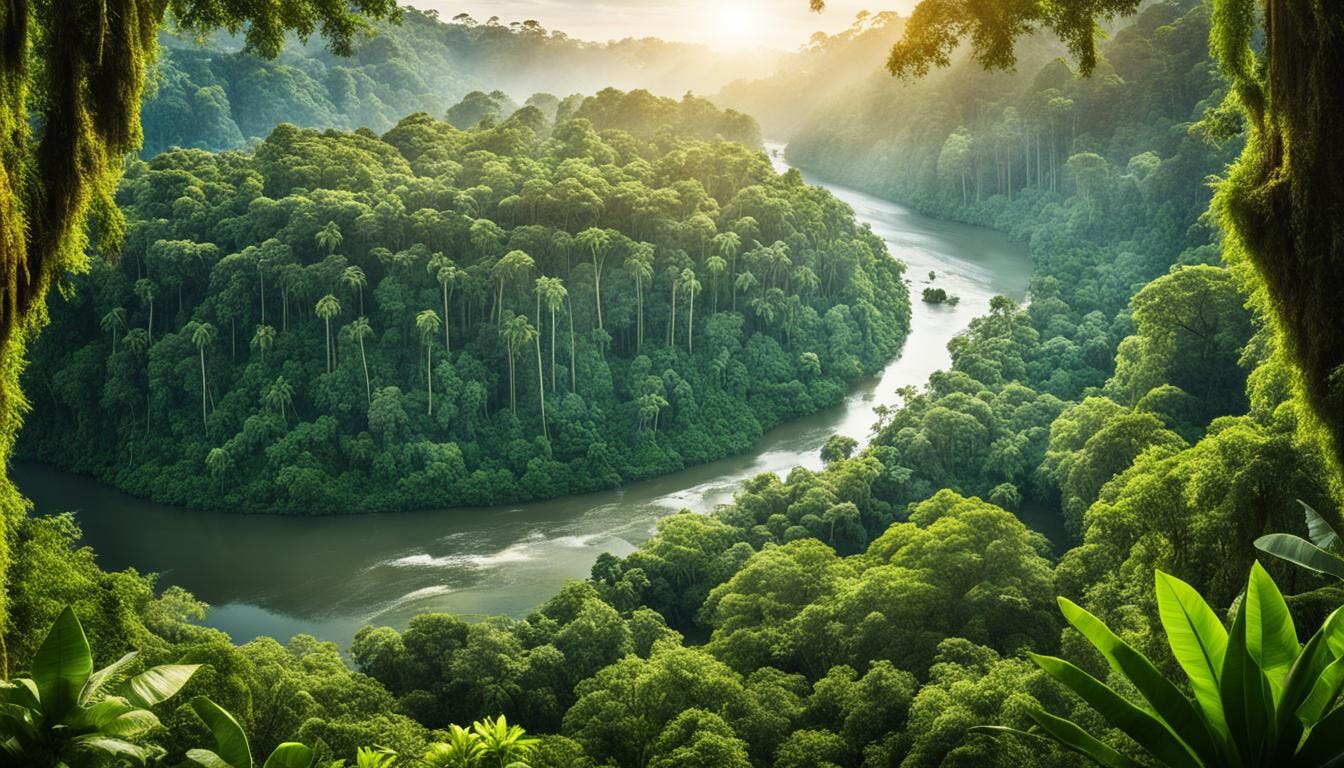
The importance of the Amazon Rainforest
The Amazon Rainforest is a wonder of nature, vital for the world. Spanning 6.7 million square kilometres, it plays a crucial role in maintaining the Earth’s equilibrium and supporting life.
The Amazon contains half of the world’s remaining rainforests, making it a central reservoir for life. Here, 10% of all known wildlife species reside, alongside unique plants and animals. This variety is essential for the planet's well-being, offering countless services that are often underappreciated.
From medicinal plants to rare animals, the Amazon's biodiversity is irreplaceable. It is a global treasure of immense value.
Climate Regulation
The Amazon serves as a vast carbon reservoir, absorbing and storing significant amounts of carbon dioxide. This aids in moderating global temperatures. It holds between 150-200 billion tonnes of carbon and releases 20 billion tonnes of water vapour into the atmosphere daily.
This natural process is critical for both the carbon and water cycles. Furthermore, the forest contributes to regulating the Earth's temperature, highlighting its role in managing global climate conditions.
Indigenous Communities
Approximately 2.2 million Indigenous people inhabit the Amazon, speaking over 300 languages. They live sustainably, their cultures and traditional knowledge playing a key role in safeguarding the forest. Their practices have helped preserve this global treasure, ensuring its continued vitality and stability.
Historical context of deforestation in the Amazon
The Amazon rainforest has experienced significant deforestation over the years. This shift in land use is not a recent phenomenon and extends back across many generations.
The Rondônia Case Study
Rondônia in Brazil exemplifies how deforestation has impacted the Amazon. Once a densely forested area, it has undergone dramatic transformation. Infrastructure development, such as road construction, and the expansion of agriculture have driven substantial forest loss.
Approximately 80% of deforestation in the Brazilian Amazon is due to cattle ranching, which now occupies around 70% of land once covered by forest. This has resulted in soil degradation and the loss of numerous native plant species.
Deforestation Trajectories
Deforestation in the Amazon has evolved over time, largely driven by economic activities. A vast portion of the forest has been converted into farmland and pasture. By 1995, around 70% of deforested areas had been converted for cattle ranching.
Additionally, the cultivation of soybeans for export has contributed to the destruction of more forest. By 2022, approximately 26% of the rainforest had either been lost or severely degraded.
This ongoing deforestation releases substantial amounts of carbon dioxide annually, negatively impacting the environment on a global scale. Understanding these developments is crucial to curbing further destruction of this invaluable ecosystem.
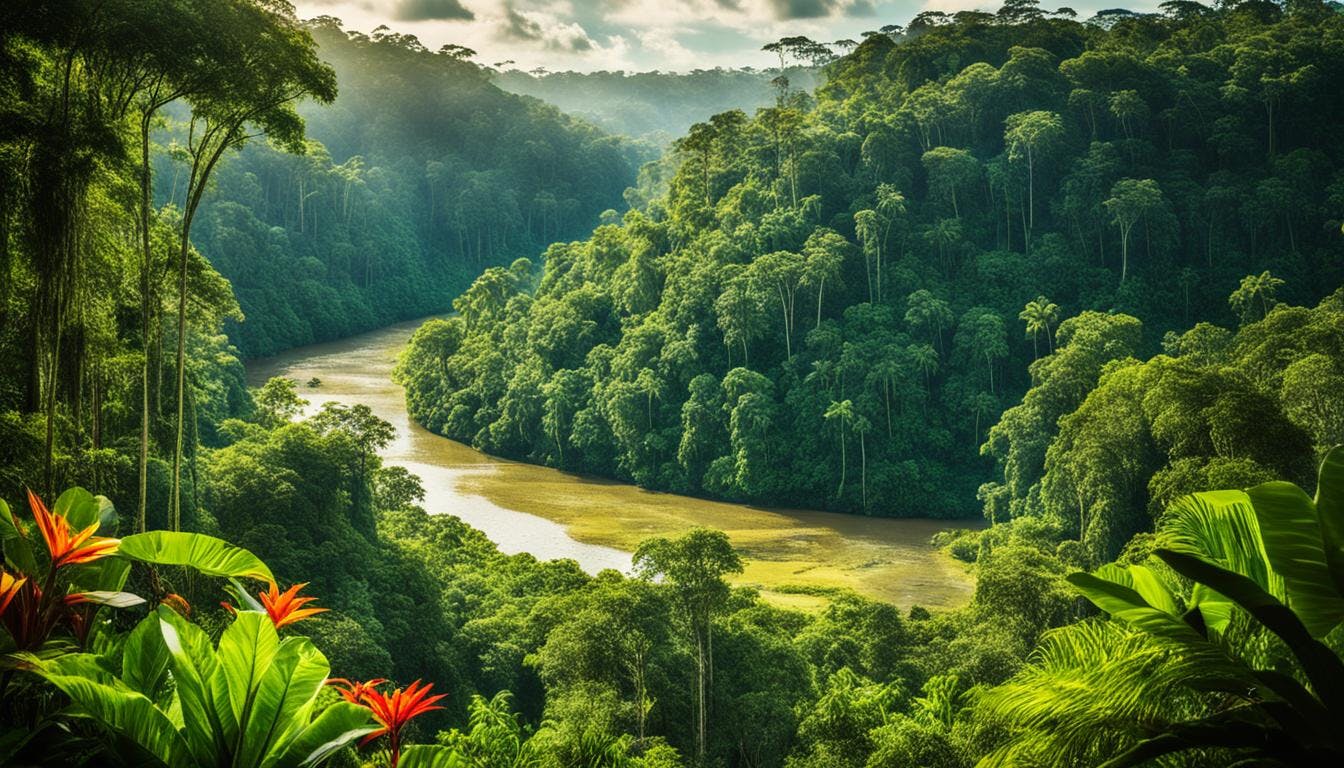
Current rate of deforestation
The rate of deforestation in the Amazon remains a serious concern. Recent statistics reveal a significant increase in forest clearance, underscoring the pressing need for intervention.
Recent Statistics
Recent data points to a concerning trend in Amazon deforestation. Although forest loss saw a substantial reduction of 55.8% between 2022 and 2023, this decline is a significant improvement.
From 2020 to 2023, the reduction in deforestation was even more pronounced, with a 67.7% decrease. The Brazilian Amazon experienced a 59% reduction, while the Colombian Amazon recorded a 67% decrease. Nevertheless, close to one million hectares were still cleared in 2023.
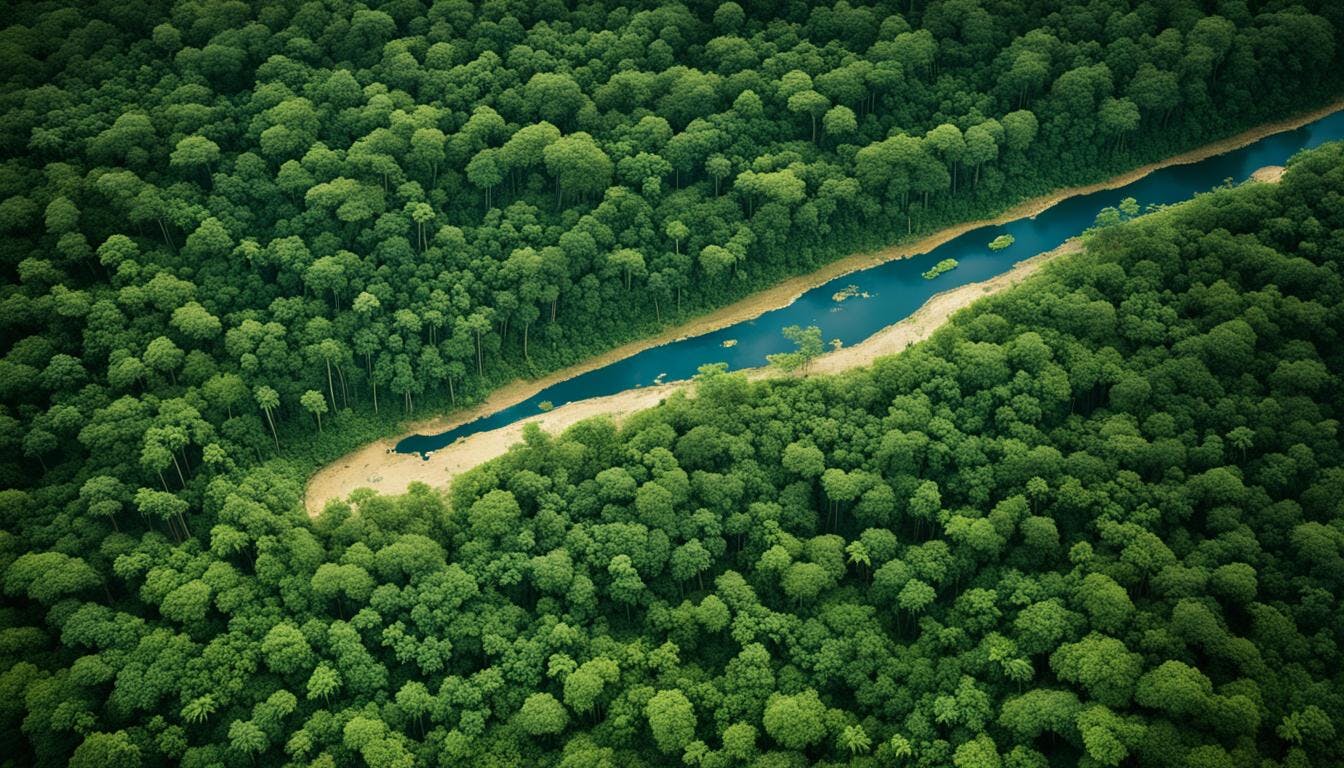
Notably, the deforestation detected by the DETER system for the first eight months of 2023 was 3,712 square kilometers, marking a 48% decline from the previous year and representing the lowest figure since 2018.
Major Areas Affected
Environmental monitoring has identified areas with high deforestation rates. In Brazil, the eastern and southern regions have been severely impacted. Bolivia, central and southern Peru, and northwestern Colombia also display significant forest loss.
The Brazilian Amazon has lost nearly 20% of its forest since the 1970s. Despite a 66% reduction in deforestation observed in August, the overall trend remains troubling. These developments underscore the urgent need for enhanced monitoring and conservation efforts.
Deforestation is altering the rainforest's structure and composition, threatening its capacity for carbon storage, biodiversity, and the livelihoods of local communities. If deforestation, degradation, and changing climatic conditions persist, the Amazon risks transforming into a savanna, which would have dire consequences for both the environment and the people who depend on it.
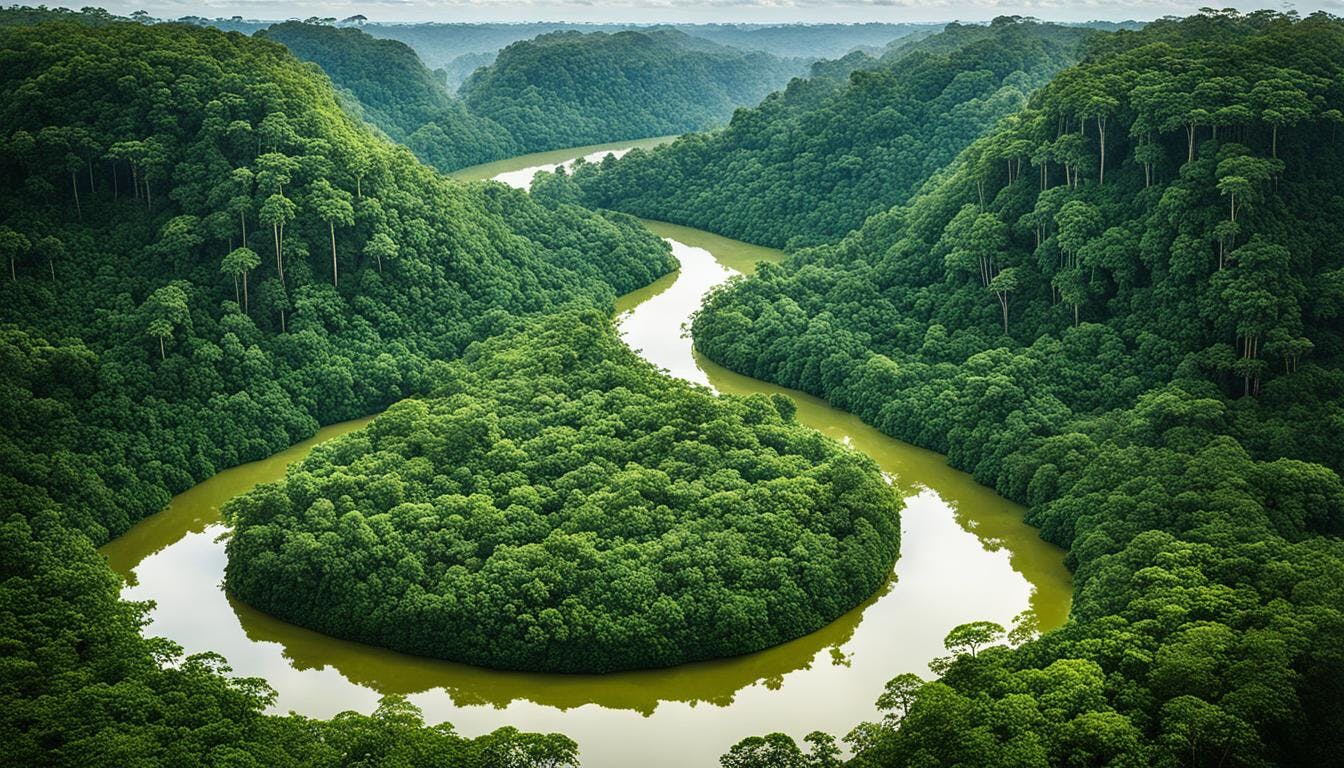
Causes of Amazon deforestation
Human activities, such as land grabbing and large infrastructure projects, are significant drivers of deforestation in the Amazon. These actions disrupt the ecosystem and frequently bypass environmental regulations.
Illegal Land Grabbing and Logging
Illegal land grabbing and logging have devastated vast areas of the Amazon. While commercial logging constitutes a relatively small proportion of deforestation, its impact is considerable. The problem is exacerbated by influential groups flouting legal restrictions.
Approximately 20% of the Gran Chaco forest in Paraguay has been converted into farmland or grazing land since 1985, highlighting the extensive reach of illegal land grabs across South America.
Agribusiness Expansion
The agribusiness sector, particularly cattle ranching and soybean cultivation, is the principal cause of deforestation. Most deforestation between 1966 and 1975 was driven by cattle ranching, a trend that has continued to escalate.
Global demand for meat and soy has perpetuated unsustainable agricultural practices. Cattle ranching remains the leading cause of forest clearance, particularly in the late 2000s, with soybean farming also contributing significantly to land degradation, as large areas are cleared to meet this demand.
Infrastructure Development
Infrastructure projects, such as road and dam construction, facilitate deforestation by providing easier access to remote areas. This influx of settlers leads to further deforestation and population growth, fuelled by new economic opportunities.
Satellite data reflects the expansion of these activities and their damaging effects on the forest. In the early stages of the 2019 dry season, a sharp increase in fires was observed in the southern Amazon, further heightening the vulnerability of these areas.
The role of Government Policies
Government actions have a significant impact on deforestation in the Amazon. Under President Bolsonaro, there has been a notable shift, driven by political changes and a disregard for conservation policies.
Bolsonaro's Administration
President Bolsonaro's tenure has been challenging for environmental protection. His administration has faced criticism for weakening conservation efforts, particularly by slashing budgets for agencies like IBAMA and ICMBio, which play crucial roles in safeguarding forests.
These budget cuts have led to reduced funding for combating illegal activities, creating a significant issue.
Environmental Law Enforcement
Strict enforcement of environmental laws is essential for protecting natural ecosystems. However, under this government, enforcement has diminished. There has been a decline in the confiscation of illegal timber, particularly in protected areas.
This weakening of law enforcement has led to an increase in illegal land seizures, contributing to further deforestation. Alarmingly, 30% of public forests in the Amazon are now claimed illegally. Without stronger enforcement, the outlook for the Amazon is increasingly dire.
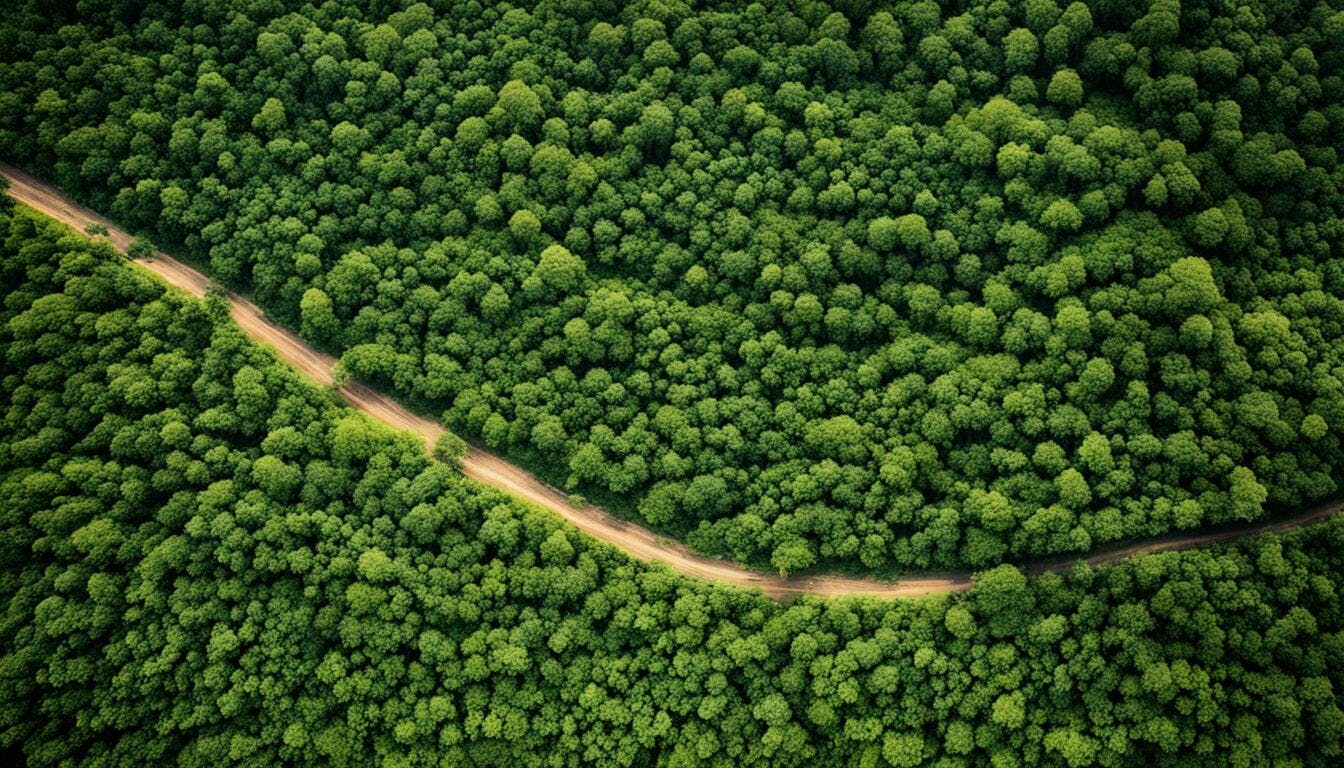

Environmental consequences of deforestation
Deforestation in the Amazon Forest has caused significant environmental problems. It harms its rich biodiversity, contributes to climate change, and damages the soil. Let's examine these issues and assess the scale of the problem.
Loss of Biodiversity
The Amazon Rainforest spans over 6.7 million square kilometres and teems with diverse species. However, as more trees are felled, numerous species face extinction. Daily, up to 137 plants, animals and insects could vanish.
If deforestation continues unchecked, some areas might lose up to 45% of their species by 2030. This loss disrupts the ecosystem, affecting the intricate relationships between different components of the natural world.
Climate Change
Deforestation accelerates atmospheric changes, impacting global climate. The Amazon, now losing trees at an alarming rate, emits more greenhouse gases than it absorbs. It has shifted from being a carbon sink to a carbon source.
Since 1970, over 600 million tonnes of carbon from the Amazon have been released into the atmosphere. If deforestation reaches 40%, it could trigger a collapse of the rainforest ecosystem. This would exacerbate climate change and intensify global warming.
Soil Degradation
Forest clearance severely impacts soil quality. Trees and plants contribute most of the rainforest's nutrients. Without them, soil erosion accelerates and nutrient content diminishes.
For every 100 trees cut down, an additional 22 trees perish due to water loss. This reduces soil fertility. As soil quality deteriorates, the rainforest's capacity to support life diminishes, compromising its vital ecological functions.
Impact on Indigenous Peoples
The Amazon rainforest spans 2.7 million square miles and is home to over 400 Indigenous communities. These communities have inhabited the region for generations. However, they now face threats from rapidly accelerating deforestation.
In 2020, the Brazilian Amazon experienced its highest rate of deforestation in 12 years, with over 4,000 square miles cleared. This has a profound impact on Indigenous peoples, leading to displacement, loss of traditional livelihoods, and cultural erosion.
Indigenous populations are disproportionately affected by these land conflicts. The loss of ancestral territories not only risks forced relocation but also jeopardises their traditional way of life, resulting in economic and food security challenges.
Displacement
As the rainforest is cleared, many Indigenous tribes are compelled to abandon their homes. This is often due to illegal land seizures and the expansion of agribusiness. Alarmingly, 22 percent of protected lands face threats from mining and oil projects, sparking land rights disputes.
These conflicts severely impede Indigenous peoples' ability to maintain their cultural identities and spiritual practices.
Loss of Livelihoods
Deforestation has escalated significantly, from less than 2,860 square miles annually in 2012 to over 4,660 square miles in 2018. This loss profoundly affects the livelihoods of Indigenous communities. Notably, areas managed by Indigenous people exhibit lower deforestation rates than national parks.
Nevertheless, logging, mining, and agribusiness continue to degrade these habitats. Consequently, Indigenous people face nutritional and economic challenges.
This extensive forest loss not only damages ecosystems but also erases cultural legacies. Traditional knowledge, passed down through generations, is at risk of disappearing. A report on deforestation's impact on Indigenous communities emphasises that preserving these ecosystems is crucial, both for environmental conservation and the protection of Indigenous cultures worldwide.
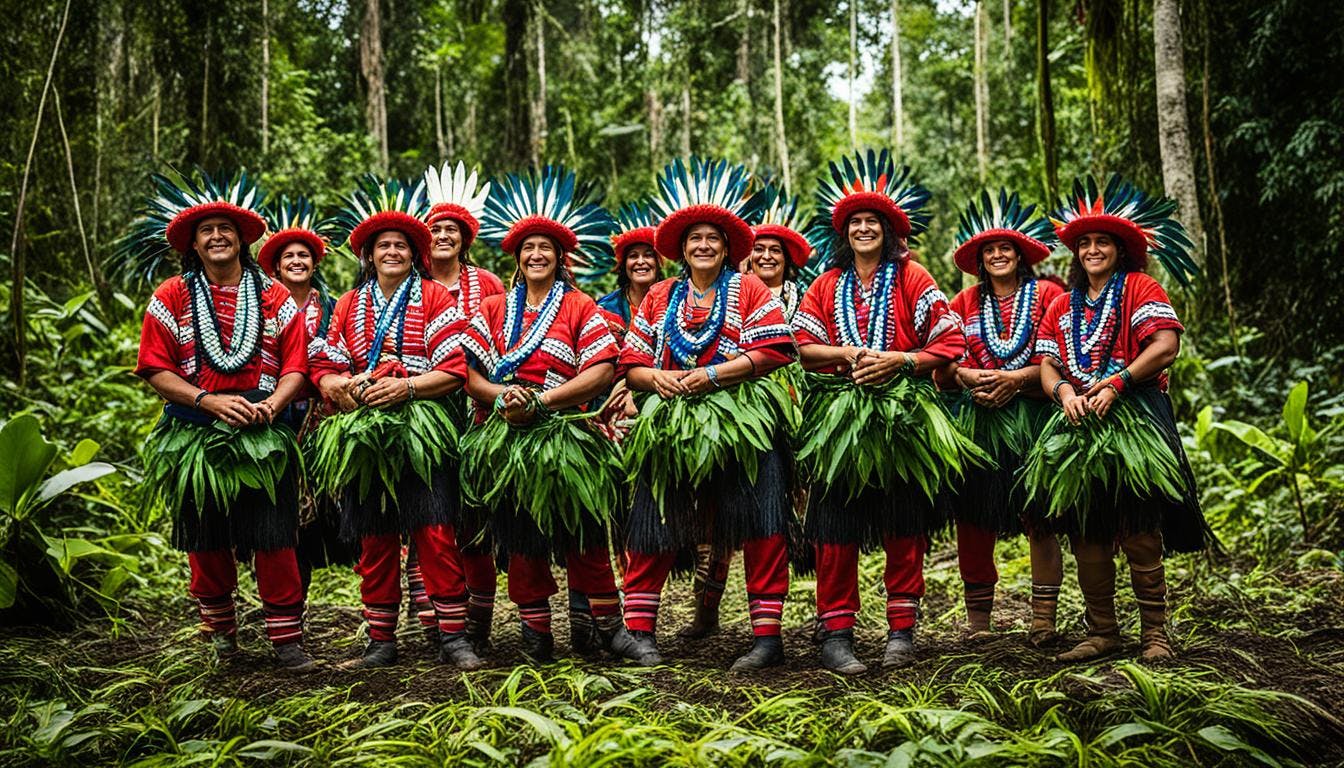
Global implications of Amazon deforestation
The effects of Amazon deforestation extend far beyond South America. They underscore the necessity for global action against environmental degradation and climate change. The Amazon Rainforest, often referred to as the 'lungs of the Earth', plays a crucial role in regulating the climate. It influences global weather patterns and helps cool the atmosphere.
Climate Regulation
Historically, rainforests covered 14% of the Earth's surface, but now only 6% remains. The Amazon is vital for climate control, functioning as a carbon sink. Its massive trees and dense vegetation absorb carbon dioxide, helping to slow global warming. However, deforestation has reduced the Amazon by 20% in 50 years, disrupting this natural process and releasing stored carbon back into the atmosphere.
Carbon Emissions
Deforestation in the Amazon not only harms biodiversity but also increases carbon emissions. If half the Amazon were to disappear, it would release 131.5 gigatons of carbon, exacerbating climate change. This underscores our global responsibility to halt deforestation. Preventing further forest loss could save the global economy £110 billion annually and reduce CO2 emissions by £1.33 per tonne.
Moreover, 70% of South America's GDP depends on the Amazon's rainfall patterns. The effects of deforestation could destabilise economies worldwide. Halting the loss of the Amazon is crucial for everyone, not just the region.
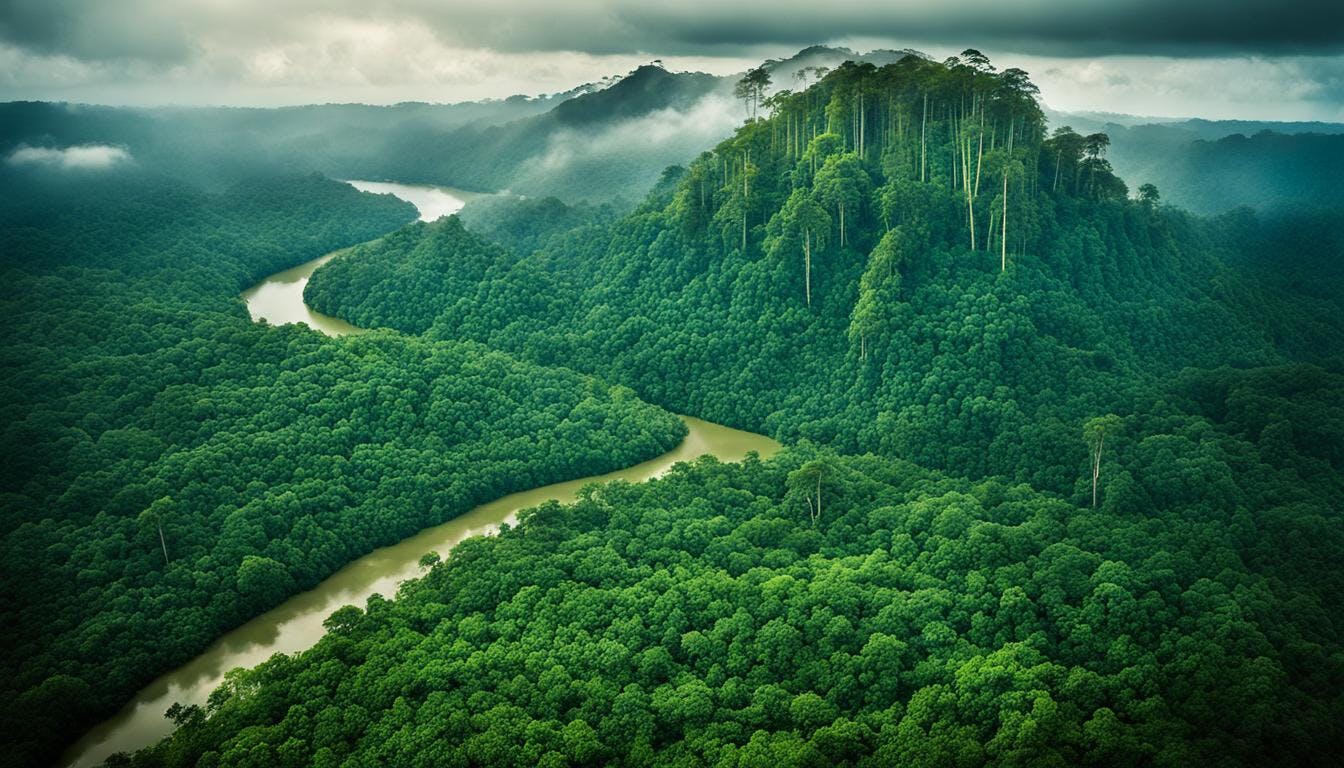

Efforts to Combat deforestation
Efforts to stop deforestation in the Amazon employ various strategies and involve diverse stakeholders. Understanding these initiatives is crucial as we strive for sustainable development and preservation of the Amazon's unique biodiversity.
Government Initiatives
Governmental actions play a pivotal role in addressing deforestation. Countries such as Brazil and Peru have implemented programmes to reduce forest loss. For instance, conservation concessions cover approximately 5 million acres, providing legal protection to substantial portions of the rainforest.
Notable examples include the Los Amigos Conservation Concession, which safeguards 360,000 acres, and the Manu–Tambopata Corridor that protects over 518,920 acres of tropical forest. These efforts form part of broader governmental strategies that can be renewed every 40 years and reviewed every 5 years, demonstrating a long-term commitment to halting deforestation.
Non-Governmental Organisations
NGOs are instrumental in tackling deforestation. Organisations like WWF and Rainforest Alliance operate on multiple fronts. They raise awareness, monitor deforestation using advanced technologies such as satellites and drones, and support reforestation projects.
For example, over 250,000 trees have been planted in the Manu National Park buffer zone. The work of these organisations is vital for promoting sustainable development and maintaining the Amazon's ecological equilibrium.
Community-Led Conservation
Community-led conservation presents a potent approach to sustainable forest management. Indigenous and local communities possess intimate knowledge of the ecosystem and have traditionally served as its custodians. The Haramba Queros Wachiperi Conservation Concession, managed by an indigenous group, protects 17,238 acres of highland rainforest in Peru.
By integrating local wisdom with modern conservation techniques, these communities demonstrate a pathway to sustainable development. This approach contributes to maintaining a healthy and thriving rainforest ecosystem.
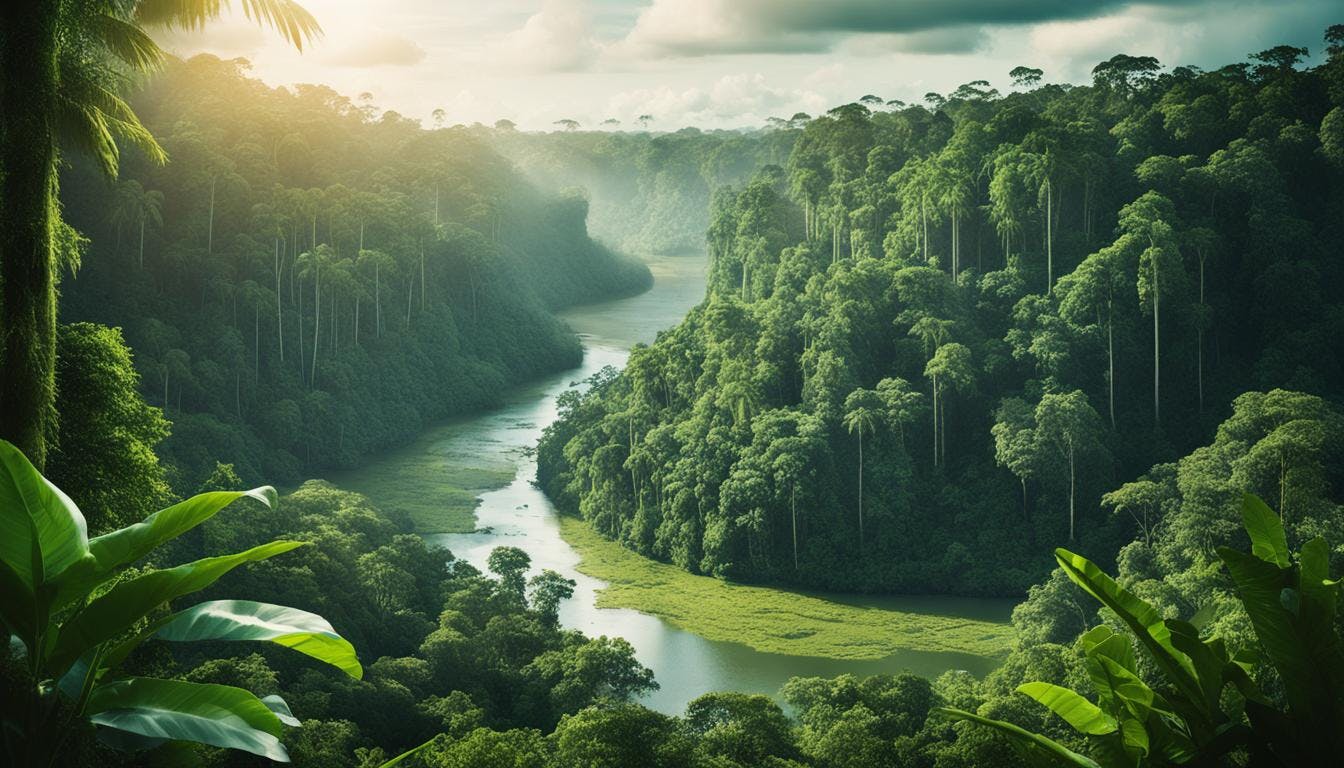
The future of the Amazon Rainforest
Looking ahead, scientists warn of potential dangers for the Amazon Rainforest. By 2050, up to 47% of its forests might face significant threats. This could lead to a transformation into drier ecosystems, jeopardising the area's ecological stability.
This change could harm the biodiversity and the crucial roles the forest plays in the climate and moisture supply of South America.
Potential Tipping Points
Alarmingly, the Amazon faces critical thresholds. Up to half of the rainforest could reach a breaking point by 2050 due to water stress, deforestation, and climate change. Already, 34% of the Brazilian Amazon has been lost, with much more degraded or altered.
Temperatures in the Amazon have risen significantly and are expected to increase by 2°C to 4°C by mid-century. This could cause widespread tree mortality and alter the forest's role in carbon storage and moisture supply.
Long-Term Sustainability
For the Amazon's long-term survival, we need robust environmental restoration and conservation plans. This entails large-scale reforestation and stringent laws to curb illegal activities. The forest holds a substantial amount of carbon, equivalent to 15–20 years of global emissions, and is vital for the climate and the livelihoods of over 40 million people.
It's crucial to protect it for the environment and the people who reside there. We should utilise the knowledge and methods of indigenous communities to aid in fully restoring the rainforest.
Conclusion
The Amazon rainforest is at a critical juncture, facing significant threats from deforestation. This is primarily due to land seizures, agribusiness expansion, and infrastructure projects. The loss of nearly a quarter of the Brazilian Amazon serves as a stark reminder of the urgent need for conservation efforts.
Deforestation's environmental impact is severe. In 2021, the Amazon accounted for 67% of Brazil's greenhouse gas emissions from land use and agriculture. Without intervention, the Amazon could lose an area equivalent to the size of France by 2050. This would exacerbate climate change and severely impact biodiversity, with particular consequences for Indigenous communities.
However, there is cause for optimism. Transitioning to a low-carbon economy in the Amazon could potentially add BRL 40 billion (£6.5 billion) to GDP by 2050. This shift would also generate numerous employment opportunities, benefiting local and Indigenous populations. By safeguarding the Amazon and investing in renewable energy and sustainable practices, Brazil could reduce greenhouse gas emissions by 94%. This would contribute significantly to addressing climate change. We all bear a responsibility to take action for the future, ensuring the Amazon's preservation for generations to come.
FAQ's
What is the rate of deforestation in the Amazon Rainforest?
Recent satellite data reveal substantial tree loss. Areas comparable to cities are being cleared within months, indicating a significant environmental crisis.
Why is the Amazon Rainforest considered a biodiversity hub?
The Amazon hosts an exceptional variety of flora and fauna, serving as a crucial global biodiversity centre. It's home to numerous unique species vital to Earth's ecosystems.
How does the Amazon Rainforest contribute to climate regulation?
The Amazon regulates climate by absorbing and storing carbon dioxide, thus reducing global warming. It functions as a massive carbon sink, cooling the planet and maintaining climate stability.
What are the environmental consequences of Amazon deforestation?
Deforestation leads to habitat loss, resulting in species decline. It contributes to climate change by releasing stored carbon dioxide. Soil degradation follows, diminishing the land's capacity to support life and provide essential ecosystem services.
How does deforestation affect indigenous communities in the Amazon?
Indigenous peoples face displacement and loss of traditional livelihoods due to deforestation. Their territories are under threat, leading to land rights conflicts and endangering their cultural heritage and traditional knowledge.
What are the global implications of Amazon deforestation?
Deforestation increases carbon emissions, exacerbating climate change. The Amazon's crucial role in climate regulation means its loss could significantly hinder efforts to control global warming, highlighting the need for international action.
17 South Street
Auckland 1010
New Zealand
info@carbonclick.com- -
- X
Sign up. Be inspired. Get clicking.
Subscribe now to stay up to date with CarbonClick, carbon offsetting and climate action.
By signing up you agree to our Privacy Policy.


